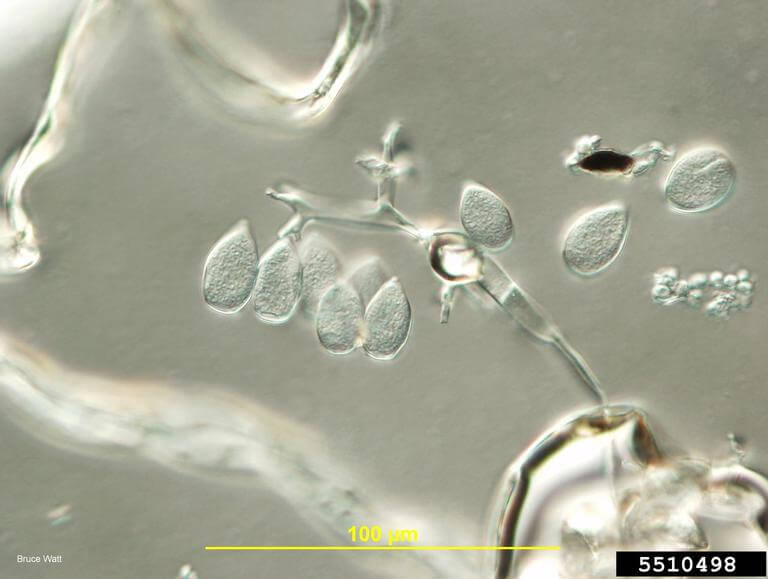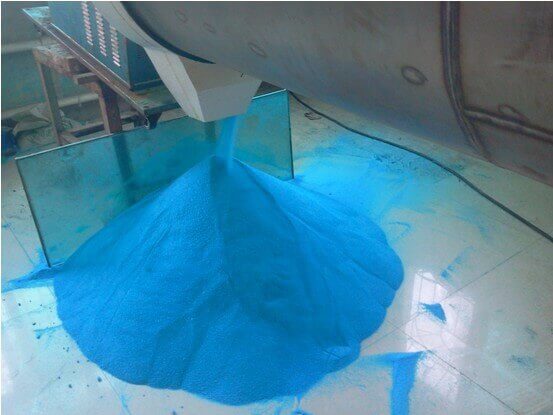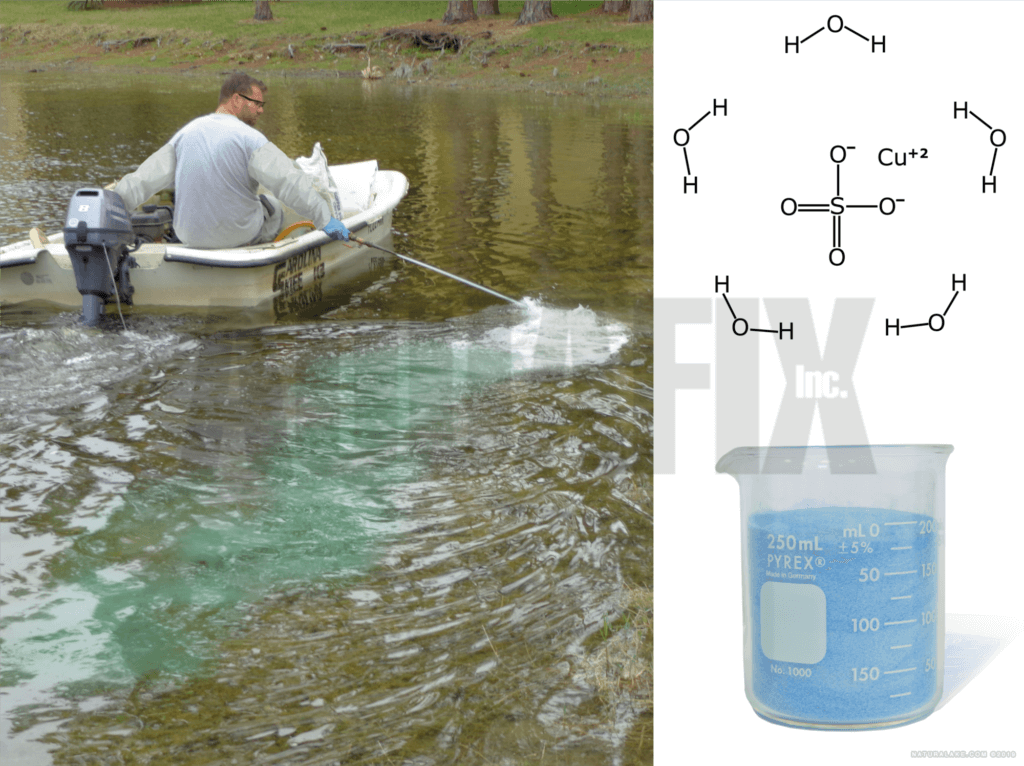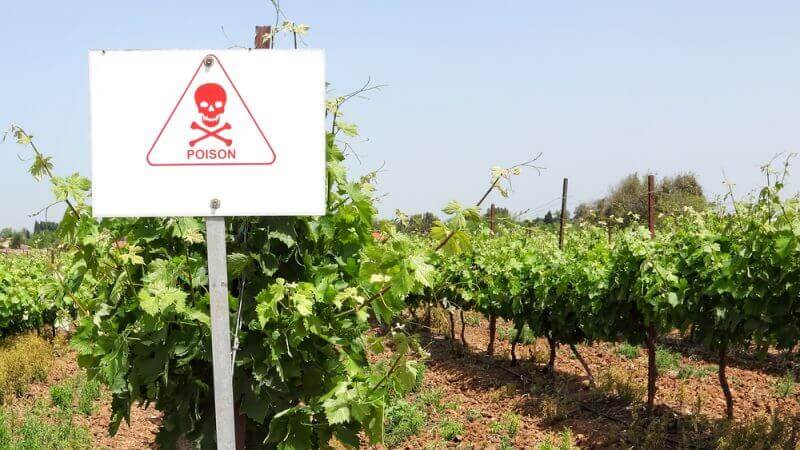Much of the ire is directed at the herbicide weedkiller glyphosate, which is reviled in the activist community, although study after study shows it is among the safest of agricultural chemicals. There have been 18 major reviews of glyphosate by independent global agencies, and none has found it poses any food dangers to humans. In June, in an 11,000 page report, the European Union concluded, yet again, (in their legalese) – “The AGG proposes that classification of glyphosate as for germ cell mutagenicity genotoxic or mutagenic is not justified.” Glyphosate is focused on weed control and is not used in organic farming, which relies mostly on mechanical weeding.
Glyphosate has attracted the attention of anti-GMO activists and members of the EU because it works hand-in-hand with some genetically modified crops bred to resist it. Critics of synthetic pesticides are unimpressed by the scientific consensus on the safety of glyphosate. They actively pursue bans, claiming that conventional agricultural chemicals causes serious ecological collateral damage to soil and insects. It’s time to draw the line on the use of conventional agricultural chemicals, they say.
How does it chemically work?
But science is not so simple and life is filled with irony. Let’s consider the safety and environmental profile of copper sulfate and other copper compounds, the most popular class of pesticides used in Europe. As they are a natural compound, they are classified as ‘organic’ even though they organic compounds are technically inorganic (ironically, technically, glyphosate is organic.) They are widely used by organic farmers an algaecide, bactericide, fungicide, and root killer. When it is mixed with calcium hydroxide it is known as a Bordeaux mixture. Their use grew in popularity in the 1800s to deter people from sampling French wine grapes. Copper sulfate was used as a deterrent to downy mildew became quickly apparent.
Copper sulfate works by binding tightly to proteins in fungi, algae, and other organisms. It then causes the cells to leak, killing the target (and some non-target) organisms. In its “Bordeaux mix” formulation, hydrated copper sulfate is mixed with lime (calcium hydroxide) to neutralize the copper compound and reduce plant damage. It can also persist through rain and stick to plants, which also causes some of the environmental problems both farmers and regulators have seen.
Downy mildew is a scourge to wine grapes. Although the alga causing it (Plasmopara viticola) was discovered in the southern US in the 1830s, it really started causing problems later once it arrived in Europe, particularly among French wine growers. Once classified as a fungus, scientists now regard it as biologically closer to algae. It still has properties that make it a challenge to combat.

Copper compounds including various copper sulfates but also copper hydroxides have been in use by almost all farmers, including many conventional ones because the safer, targeted synthetic versions used by some conventional farmers are not as effective as the more toxic organic copper products. Most countries in Europe use about 1.5 to 2 times the amount of pesticides per acre than the US mostly because of the use of copper compounds, primarily on vineyards, as they control mildew. They are also used in other aspects of organic farming, especially with potatoes, grapes, tomatoes and apples.
Does organic mean safe? Not in the case of copper compounds work?
But let’s be clear here: just because organic compounds are organic, does not mean they are safer. In fact, organic copper products are one of the most toxic chemicals used anywhere in farming.Studies show that soil copper in conventional and organic vineyards had lower soil microbial activity in organic vineyards, which had higher copper concentrations than conventional fields. Highest concentrations were measured from vine leaves. Copper cycling is very slow, so it can accumulate in large amounts in the soil over time. Too much copper can cause chlorosis of vine leaves.
Copper compounds don’t biodegrade and can essentially ‘kill’ the soil, rendering it useless, if not properly managed. It is bio-accumulative, meaning it can build up to toxic levels in the soil. In fact, many organic wine growers, in the US and in Europe (including France) have opted out of their organic designation in order to use alternatives to copper sulfate fungicide. Their fears? Accumulation of the chemical in soil.
Unlike glyphosate, it poses huge dangers to beneficial insects and other life forms. According to the European Chemical Agency (ECHA), copper sulfate “is very toxic to aquatic life, is very toxic to aquatic life with long lasting effects, may cause cancer, may damage fertility or the unborn child, is harmful if swallowed, causes serious eye damage, may cause damage to organs through prolonged or repeated exposure.”
In January 2018, the French National Institute for Agricultural Research (INRA) in a report co-commissioned by the French Institute for Organic Farming (ITAB), concluded: “Excessive concentrations of copper have adverse effects on the growth and development of most plants, microbial communities and soil fauna,” recommending in a scientific report that the government should intervene to “reduce use of copper for the protection of biological uses”.
A few months later, the European Food Safety Authority (EFSA) declared copper compounds to be “of particular concern to public health and the environment.” Definitive research has shown copper sulfate can be toxic to humans, far more so than glyphosate. It is not as targeted as many biological pesticides are, so whatever it does to fungus cells, it can do to you and to beneficial insects. It has been associated with skin and eye irritation. Signs and symptoms from swallowing it are a metallic taste, nausea, vomiting, diarrhea, upper abdominal pain and tissue damage.
It is toxic to honeybees and a study showed extreme toxicity to bees in tropical environments (it was carried out in Brazil), where copper sulfate is used as a sprayed fertilizer (to provide heavy metal nutrients). In addition, and unlike glyphosate, the European Chemicals Agency has declared it a carcinogen—research has associated it with kidney cancer, in particular. As a carcinogen, copper sulfate would be subject to EU regulations restricting its use among workers, if not banned altogether.
In addition, the European Food Safety Authority (EFSA) pointed to risks to farmers, birds, mammals and soil organisms. Both the EFSA and the US Environmental Protection Agency say more data is needed on the potential health effects on consumers, but there is evidence of carcinogenicity.
Where is it used?
Copper sulfate, or “blue stone,” is used for a diverse array of industrial processes, but about three quarters of the 275,000 metric tons made every year is dedicated to agriculture, particularly as a fungicide and insecticide, according to the UK-based Copper Alliance. About 100 companies manufacture copper sulfate, in some form.
Several forms of copper in use agriculturally. Copper sulfates, and copper hydroxides are common. “Bordeaux mix,” which includes copper sulfate and lime has been popular especially in vineyards for at least 100 years. Bordeaux mix was the first fungicide to be used on a worldwide, large-scale level. Other compounds include copper hydroxides and various forms of sulfates, including copper sulfate pentahydrate. Still other formulations have been invented to make copper adhere more tightly to leaves (even in rain), and reducing the need for repeated applications.
 While copper sulfate exists in nature, most of made in factories, and so is technically synthetic. While the US Department of Agriculture’s National Organic Program (and other organic organizations worldwide) forbid the use of synthetics, they make exceptions when no other effective “non-synthetic” product is available. And USDA lists copper sulfate as a “synthetic,” that is allowable for organic growers.
While copper sulfate exists in nature, most of made in factories, and so is technically synthetic. While the US Department of Agriculture’s National Organic Program (and other organic organizations worldwide) forbid the use of synthetics, they make exceptions when no other effective “non-synthetic” product is available. And USDA lists copper sulfate as a “synthetic,” that is allowable for organic growers.
As a fungicide, copper sulfate is pretty much the only possible recourse for organic winemakers looking to eradicate downy mold and mildew, which (though now classified as an alga) usually means death to wine vines.
“You kind of don’t have a choice,” says Caroline Conner, current Master of Wine student and expert wine teacher at Wine Dine Caroline. “If you’re dealing with mildew and rot, copper is one of the only things that organic producers can do.”
“Producing grapes for wine without cupric products is currently almost impossible in our climatic conditions and with current grape varieties,” explains Hervé Dantan, Chef de Caves at Champagne Lanson. “It’s hard to follow the organic regulations in places that are wet,” adds Conner. “And we’ve assigned this quality value to it in a weirdly judgmental way: like you’re good or bad.”
“There are a number of fungicides that are effective for downy mildew; they are synthetic (conventional) fungicides,” said Janna Beckermann, professor of botany and plant pathology at Purdue University. “Unlike copper, which is responsible for heavy metal poisoning over time, acute copper poisoning, blinding, and a number of ill-effects to the environment, the conventional fungicides we use today do not persist in the soil, merit nothing more than a caution (as opposed to copper, which receives a warning on the pesticide label), and are more effective at a lower rate of active ingredient.”
Other controls
There are some synthetic alternatives, but none is optimal. There are two main types of conventional fungicides used against downy mildew. ‘Pre-infection” chemicals need to be applied (often repeatedly) before an infection. Watching weather forecasts and applying just before rain (or high humidity) are necessary steps. Pre-infection fungicides include the family of copper compounds, as well as dithiocarbamates (thiram and ziram), phthalimide (captan), chlorophenyl (Bravo), quinone, strobilurin, and cinnamic acid. For organic farming, only copper compounds are permitted.
Post-infection fungicides are largely systemic, taken up by the plant to eradicate existing infection. These include Ridomil, phosphonate (mostly in Europe)
Even synthetics come with problems. First, they are typically expensive. But even more challenging, downy mildew and other algae and fungi easily mutate to form resistance. And whether alga or fungus, these microorganisms can develop resistance quickly because of their short life cycle, prolific creation of spores and dispersal of those spores over very long distances. In addition, the actions of synthetic fungicides are easy to resist. This resistance works in four ways: mutations that change the target protein, boost target protein production, decreasing effective concentrations of the antifungal, and metabolic detoxification and degradation.
The table below shows a number of possible alternatives (conventional and organic) to copper sulfate. A major challenge is finding an alternate that matches copper’s toxicity to plant pathogens, broad spectrum activity, and cost:

Loose regulations of toxic organic copper products
The European Union recently passed a regulation reducing copper compound use to 4 ha/kg/year, down from the current upper limit of 6 ha/kg/year. This will not be an easy rule for wineries in humid and rainy areas to follow, and was not an easy fix. The EU went through several rounds of discussions over the fate of copper sulfates and other compounds, and ruled in apparent contradiction to the European Food Safety Agency (EFSA), which declared copper to be a risk to farm workers, birds, mammals and soil organisms, and cited its many health and environmental hazards. Even the EU had in 2015 planned to phase out copper compounds.
These goals may be attainable in very dry years, but no much in wet ones. It also can’t reverse the decades of accumulation in wine-growing regions. A Slovenian study looked at accumulation rates of copper compounds and found a lot of overuse. In Europe, amounts of 20 kg/ha (20 ppm) have been seen in Europe. Totals should never exceed 50 ppm, but average global concentrations are 30 ppm, and much higher levels have been seen in vineyards:
- In Slovenian vineyards, between 62 and 120 ppm
- In older Slovenian vineyards, more than 300 ppm
- In French vineyards, more than 100 ppm, even 1,000 ppm
- In Central Italy, between 40 and 220 ppm
- In Central Chile, 162 ppm in one sampled area, and 751 ppm in a second area
In the US, copper compounds are permitted for both conventional and organic use. For California, copper is by far the most commonly applied active ingredient against fungus (it’s mainly used on wine grape leaves and as an anti-algicide in rice). At a little over 400,000 acres a year, it beats quinoxyfen (at about 280,000 acres), pyrachlostrobin, boscalid and tebuconazole (all three at about 250,000 acres), according to the state’s Department of Pesticide Control. Nationwide, about 400,000 pounds of copper hydroxide is used on grapes (it’s registered for any crop), representing about 65 percent of all wine grapes grown in the US, according to the Environmental Protection Agency. In addition, about 100,000 pounds of copper sulfate pentahydrate is used (about 15 percent of grape crops).

Some of the approximately 1,000-1,500 organic wine growers worldwide (out of tens, maybe hundreds of thousands of wineries in total) have tried to find ways around copper sulfate. Purdue University’s Agricultural Extension has several alternatives to copper sulfate (though their relative effectiveness is uncertain), and guidelines on plant selection and prudent application techniques if copper is necessary. They also make several recommendations on variety selection, timing, preventive soil preparation and other methods that may make copper unnecessary.
Another route is biocontrol, direct action from plant extracts (nettles, horsetail, essential garlic or clove oil), destroying pathogens over winter, pruning and other management, varietal selection for resistance—none have been shown to be nearly as effective as copper compounds.
Esco (the French Collective on Scientific Expertise) in 2018 conducted an extensive review of these techniques. “None of them alone has the overall effect of copper and their effectiveness is uncertain depending on the spreading conditions or the weather,” recognizes Didier Andrivon, researcher for the French National Institute for Agriculture, Food and Environment (INRAE).
Even conventional farmers still harbor a preference for copper compounds—it’s much cheaper than the alternatives. And for many crops, rotation may be more possible, reducing the use of copper from season to season. Of course, rotating between grape and non-grape crops for wines isn’t really possible, nor desirable among vineyards that pride themselves on the age of their vines.
Varietal resistance has the most promise, but run into skepticism from organic farmers, may not carry favorable wine characteristics, and lead one to consider GMOs.
Less toxic products in the pipeline?
There are no widely embraced alternatives to copper sulfate, even permitting synethetic alternatives. The old nemesis of pathogen resistance to agricultural chemicals plagues fungicides, as well. Researchers at the University of Georgia recently found genes that conferred resistance to the fungicides quinone outside inhibitor (QoI) and carboxylic acid amide (CAA). At least for grapes in Georgia, QoI was not particularly effective as a fungicide anymore.
Some recent genetic studies may show a way to help develop more disease-resistant plants. A team from the Institute of Plant Protection in Shenyang, China, published results in 2020 based on transcriptome sequencing of mildew-susceptible and mildew-resistant wine plants. They found 196 genes that played some role in resisting mildew, as well as a number of cell signaling pathways that could be exploited to create more resistant cultivars of grape plants.
Research continues. While introducing new varieties of resistant wines could run into barriers put up by industry tradition and customer loyalty to certain grapes and terroirs, other studies are looking at downy mildew itself. A recent study showed how the microorganism—a eukaryote—reproduces sexually, which could point to ways to interrupt this ability and halt infections.
The best alternatives probably will come from a combination of techniques—physical, chemical, and genetic. Looking for genetic modifications that can preserve grape varietals, reduce the impact of downy mildew could be part of a “new” Bordeaux mix—this one an Integrated Pest Management technique that can employ any method available.
Considering the political opposition to non-organic pesticides in many circles, it’s understandable to question whether technological solutions, even when proven safer than natural ones, will ever gain wide-acceptance in Europe and other anti-innovation centers.
Andrew Porterfield is a writer and editor, and has worked with numerous academic institutions, companies and non-profits in the life sciences. BIO. Follow him on Twitter @AMPorterfield



































